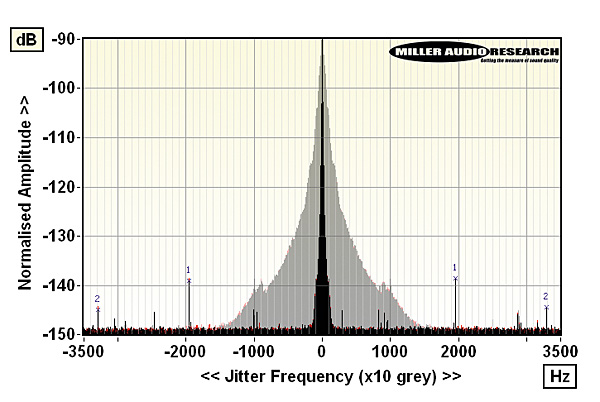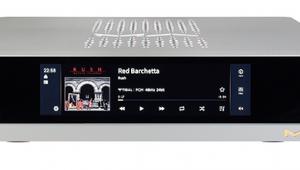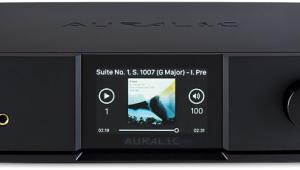Weiss DAC501 USB/network DAC Lab Report


The default digital filter is a medium/steep roll-off, linear phase type with equal pre/post-event ringing. This 'time domain' distortion is traded against a full >90dB stopband rejection, ensuring no ultrasonic aliasing artefacts make their way into your amplifier while still extending the response out to –0.3dB/20kHz, –2.3dB/45kHz and –7.0dB/90kHz with CD/48kHz, 96kHz and 192kHz digital sources, respectively. There's a note buried in Weiss's technical white paper alluding to the DAC50x's use of an asymmetric/off-centre re-clocking frequency (195kHz) – a technique also employed by Hegel. In this instance the suppression of correlated jitter is also state-of-the-art at <10psec over all CD-192kHz sample rates, although a trace of some noise-like/uncorrelated jitter remains [see Graph 2]. PM
Maximum output level / Impedance: 6.66Vrms / 45ohm (XLR out)
A-wtd S/N ratio (S/PDIF / USB): 119.4dB / 119.3dB
Distortion (1kHz, 0dBFs/–30dBFs): 0.0003% / 0.0003%
Distortion & Noise (20kHz, 0dBFs/–30dBFs): 0.0004% / 0.0004%
Freq. resp. (20Hz-20kHz/45kHz/90kHz): +0.0 to –0.3dB/–2.3dB/–7.0dB
Digital jitter (48kHz/96kHz / USB /net): <10psec / <10psec / <10psec
Resolution @ –100dB/–120dB (S/PDIF): ±0.0dB / ±0.8dB
Power consumption: 14W (1W standby)
Dimensions (WHD) / Weight: 188x66x300mm / 6kg
Price: £720

























































